More than 80,000 diverse ceramic objects in National Trust Collections tell a global story, and make up one of the world’s greatest ceramics collections.
Highlights include treasures from imperial China and Mughal India, Italian renaissance maiolica, French royal porcelain and outstanding Meissen and Wedgwood products. Authentic collections in their original settings speak eloquently of fascinating changes in fashion and society, from Elizabethan to modern times.
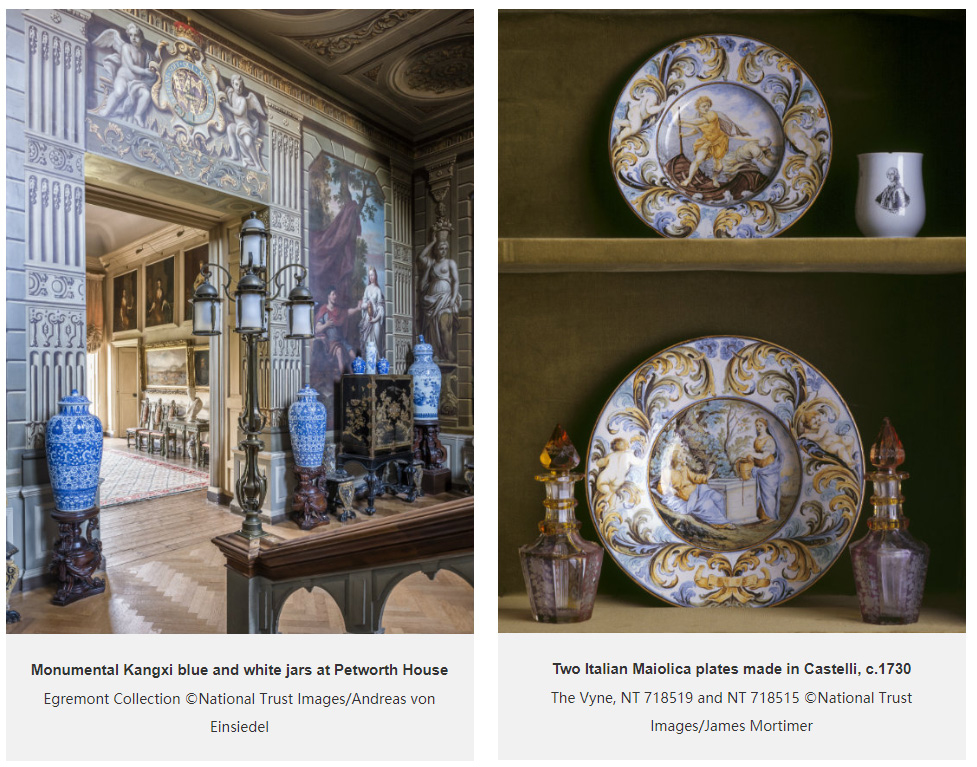
The past is present
Among the oldest items in the collections are objects from tombs in China, such as a glazed earthenware camel from the Tang dynasty (618-907 AD), which first arrived in Britain in the 1920s. Meanwhile modern ceramics are represented by twentieth-century British studio pottery, including a bowl by the Austrian-born Lucie Rie (1902-1995) from the 1970s. The Tang camel and modern bowl are both at Greenway, Devon, home of the crime-writer Dame Agatha Christie (1890-1976).
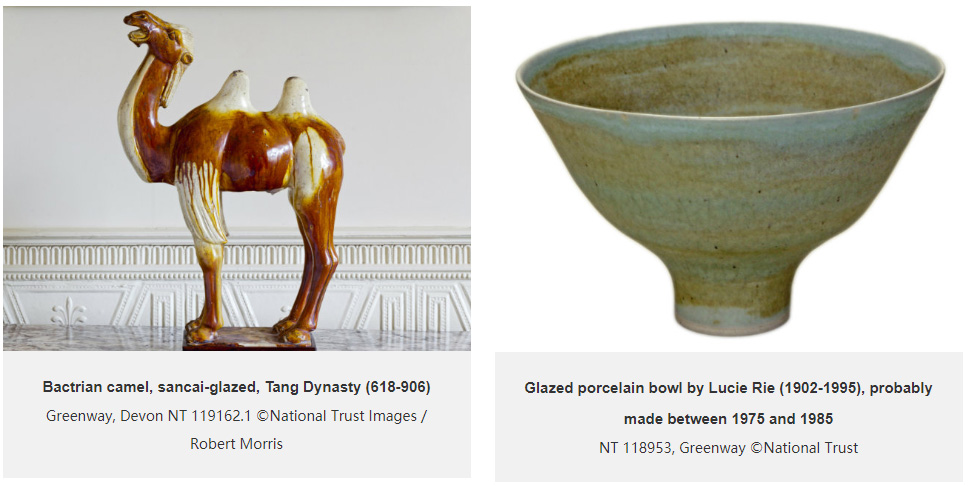
Global encounters
Ceramics arrived from the four corners of the globe, especially Asia and Europe, but there are also examples from the Americas as well as Africa. A painted water-jar (c.1875) at Gawthorpe Hall, Lancashire, made by a female member of the A’shiwi people of New Mexico, known as the Zuni Indians, was acquired in around 1912 by Captain Lawrence Ughtred Kay-Shuttleworth (1887–1917). At Kingston Lacy, Dorset, there is a group of inscribed ceramic fragments (ostraka) from the island of Elephantine in the Nile, collected by William Bankes (1786-1855) during an Egyptian expedition in 1818-1819. Used as 'scrap paper' the fragments bear hand-written notes in Greek, Demotic and Hieratic scripts, and date from 200 AD.
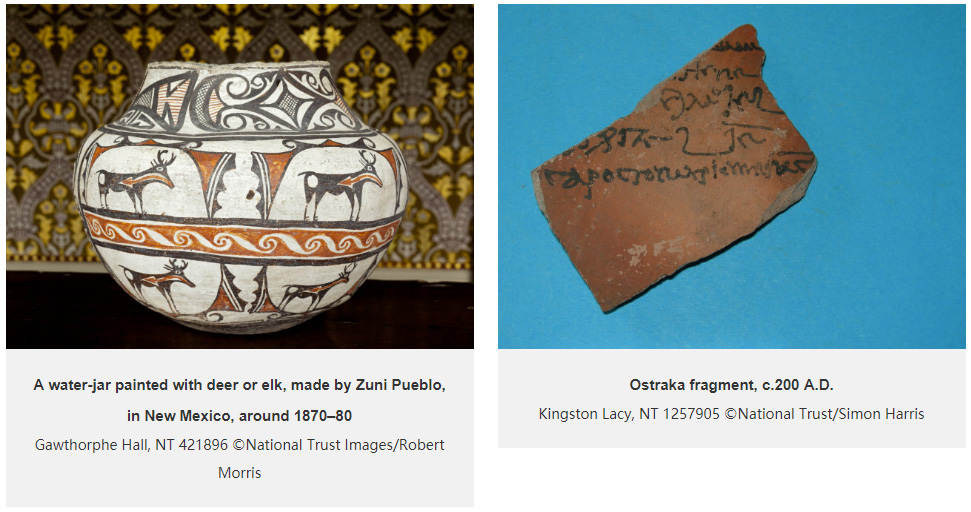
Asia at home
Many of the ceramics from Asia were acquired new by the families that lived in these mansion houses. Initially, they were assembled for use on tea and dessert tables. Several sets of porcelain 'dessert' plates, made at Arita, Japan (c. 1700) are at Belton House, Lincolnshire. Services of matching plates and serving vessels for the dinner table did not generally appear until the second quarter of the eighteenth century. The earliest were services with coats of arms, which began to appear with great frequency from about 1720. The Chinese porcelain table service at Osterley Park, Middlesex is decorated with the arms of the Child family, who were directors of the English East India Company and could order anything from China through their agents.
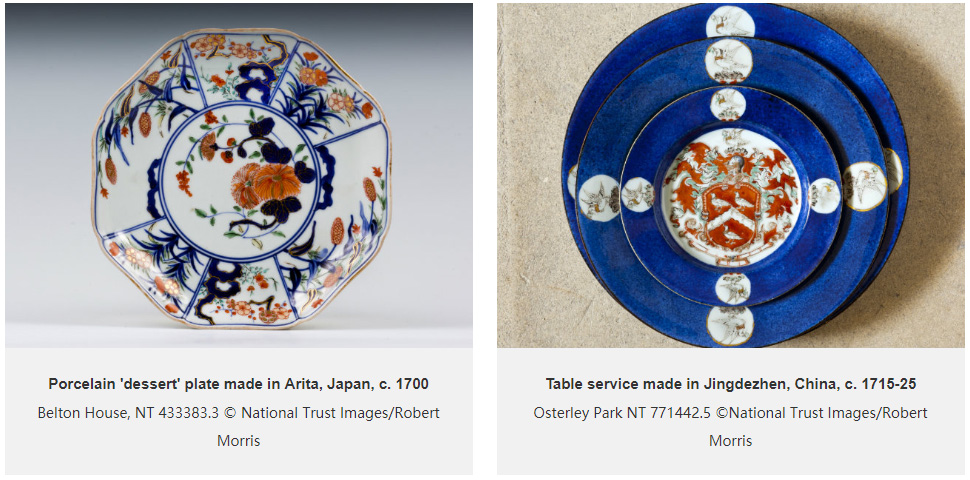
Made in Staffordshire
The vast majority of ceramics, however, were made in Staffordshire, the heartland of the British ceramic industry since the mid-18th century. Josiah Wedgwood, the celebrated potter who championed this fledgling enterprise from craft to mass-production, sold many sets for daily use to the nobility and gentry, many of whom were owners of current National Trust houses. Examples of Wedgwood's rare, so-called 'Michelangelo lamps' (c.1770-1775) made of black basalt (an unglazed stoneware) can be found at Saltram, Devon, Stourhead, Wiltshire and The Vyne, Hampshire. In the mid-nineteenth century, few china manufacturers could compete with Minton & Co., based in Stoke-on-Trent, who supplied the upper classes with bespoke services, such as the turquoise ground service (c. 1865-85) for the Egertons at Tatton Park, Cheshire, identical to a service purchased at the Great Exhibition in 1851 by Queen Victoria.
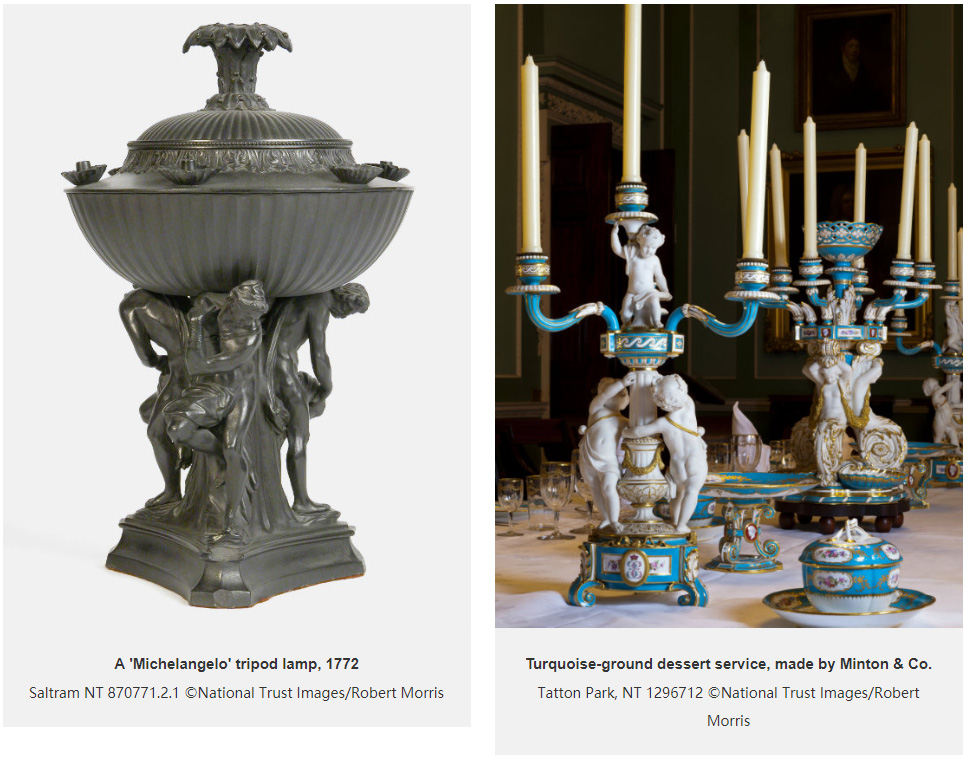
French porcelain tableware
The French revolution and later Napoleonic wars saw the diaspora of French porcelain made at Sèvres for the court. English aristocrats 'hoovered up' fine examples. Sir Harry Fetherstonhaugh (1754-1846) acquired a biscuit centrepiece in 1819 for Uppark, West Sussex. The Vincennes porcelain at Osterley Park, Middlesex, was possibly purchased at auction in London in the 1790s. Some aristocrats visited France during periods of peace and purchased services at the Sèvres manufactory, near Versailles or from retailers in Paris. At Knole, Kent there is a grand service (1769) acquired by John Frederick Sackville, third Duke of Dorset (1745–99), when in Paris.
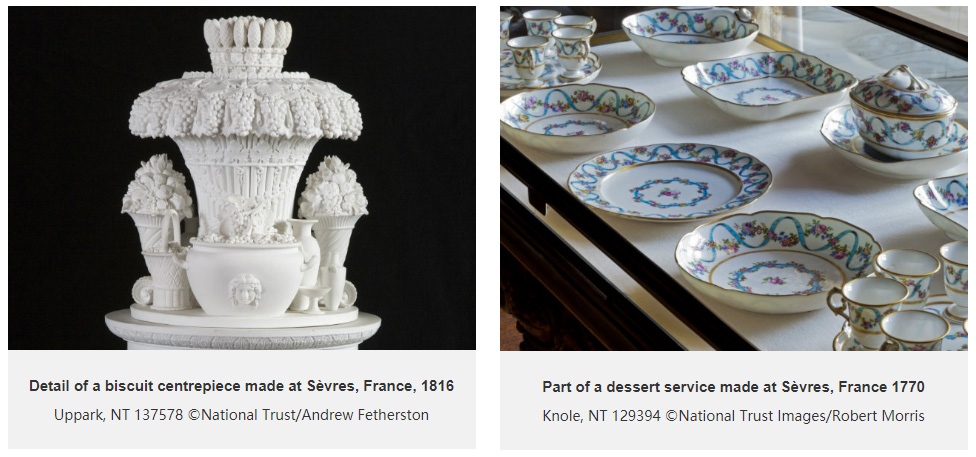
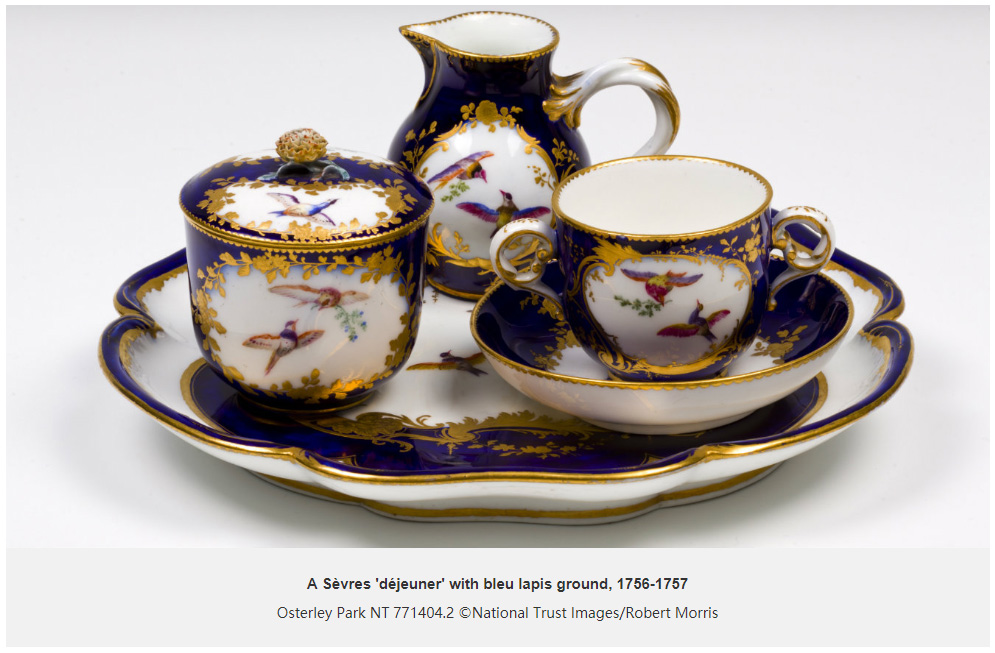
Porcelain for display
In the nineteenth century, wealthy industrialists began to collect old Sèvres for display rather than use, and one of the last collections so formed and still intact is at Upton House, Warwickshire, acquired by Colonel Walter Horace Samuel, 2nd Viscount Bearsted (1882–1948). It includes items from the services made for Catherine the Great of Russia and Louis XVI. His father, the founder of Shell Oil, Marcus Samuel 1st Viscount Bearsted (1853-1927), was one of the last great collectors of Chelsea porcelain from the ostentatious Gold Anchor period, 1758-1765.
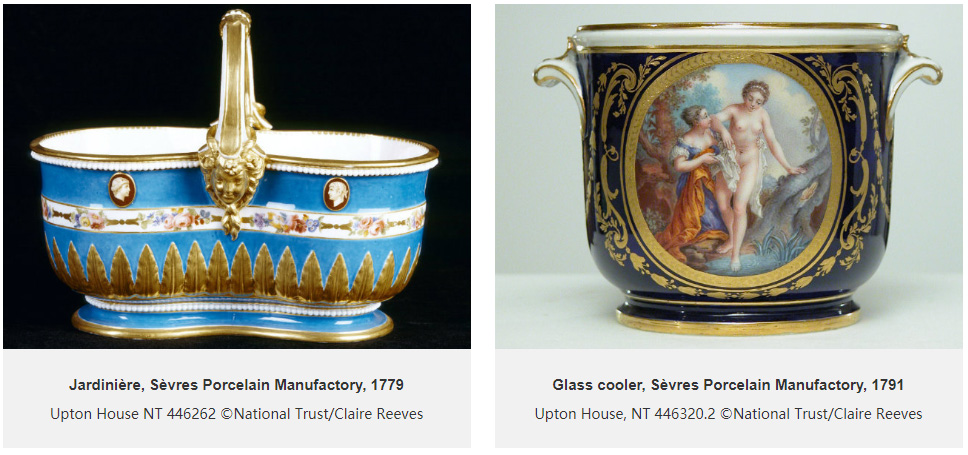
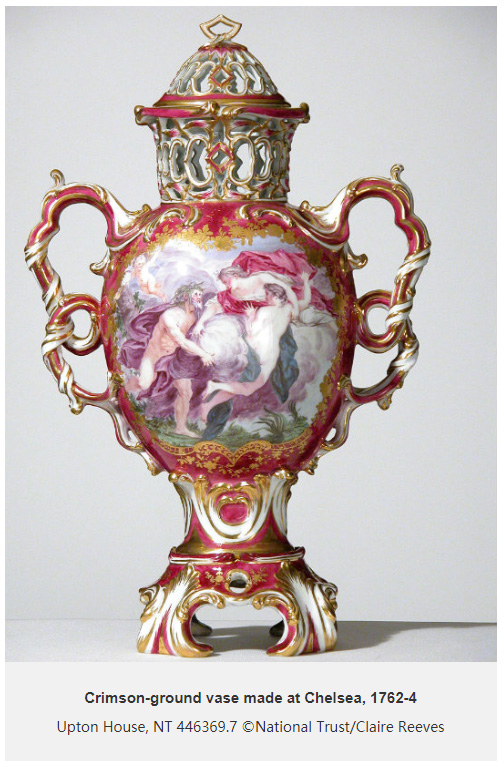
English Porcelain Sculpture
One of the largest ceramic collections in the National Trust at Wallington Hall, Northumberland includes a rare group of Bow porcelain figures (about 1755). Used to animate the dessert table, they have probably been together since new. Many of these English figures were after Meissen porcelain models, circa 1740, which were imported in England when new and later, an important collection formed by Millicent Salting (d. 1924) is at Fenton House, London.
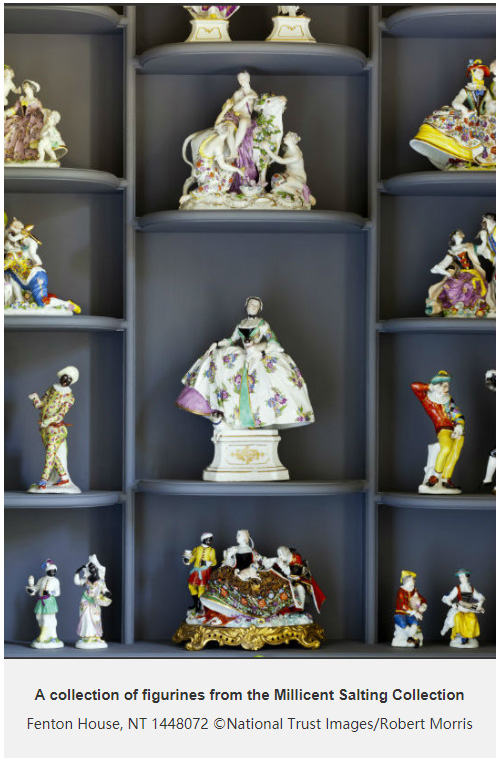
The assemblages of ceramics found at each property were amassed over centuries, purchased new or second-hand at auction or from retailers, inherited through marriage, and acquired as diplomatic gifts. Through research the individuals associated with their acquisition may be identified or sometimes the history of where they were displayed may be uncovered.
Over time, many ceramics sets became unfashionable, damaged or superfluous and were replaced with the latest wares. Historically, while the 'best china' was reserved for the principal rooms, the residual wares were kept in the housekeeper's room or china stores, hidden from public view. Study of these collections as a whole sheds light on the history of taste, customs and the changing status of individuals and of a nation.
Further information
Ferguson, Patricia F. Ceramics: 400 years of British collecting in 100 masterpieces, Philip Wilson Publishers, 2016.
Ferguson, Patricia F. Garnitures: vase sets from National Trust houses, London: V&A Publishing, 2016.
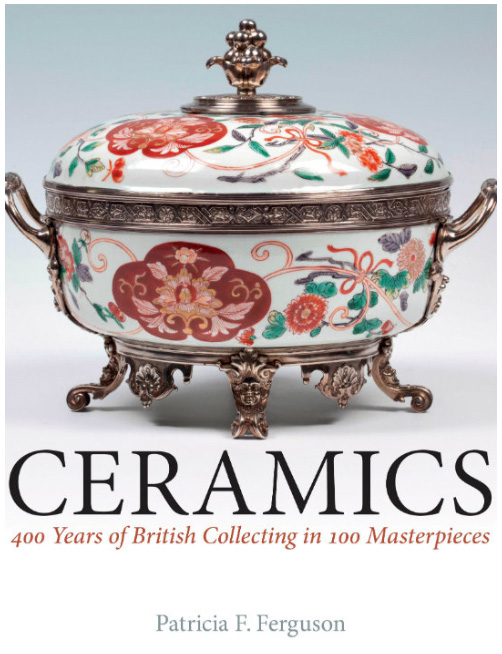
Ceramics: 400 years of British collecting in 100 masterpieces by Patricia F. Ferguson was published by Philip Wilson Publishers in 2016.
This thoroughly researched and beautifully illustrated book presents the rich and varied ceramics in the National Trust's vast and encyclopedic collection, numbering approximately 80,000 artifacts, housed in 250 historic properties in England, Wales, and Northern Ireland. One hundred key pieces have been selected from this rich treasure trove, each contributing to our knowledge of ceramic patronage and history, revealing the very personal stories of ownership, display, taste, and consumption.
Winner of the 2017 American Ceramics Circle Book of the Year Award